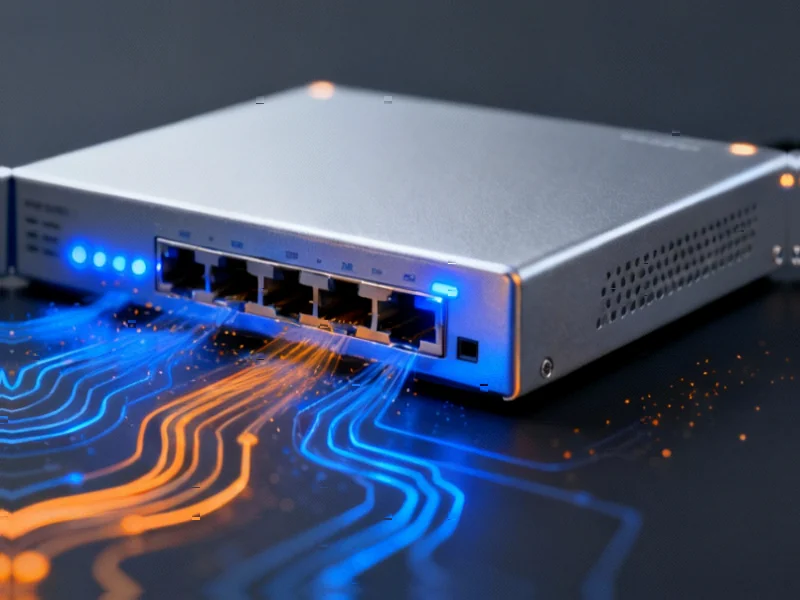In the world of network security, conventional wisdom has long dictated that firewalls should be stable, predictable, and updated sparingly. OPNsense is systematically dismantling that assumption with a release cadence that would make most enterprise IT managers nervous—and according to growing user sentiment, that’s exactly what makes it brilliant. The open-source firewall platform has positioned frequent, sometimes weekly updates as its core feature rather than a liability, creating both division and devotion in the network security community.
Table of Contents
The Update Paradox
What makes OPNsense’s approach so controversial isn’t just the frequency of updates—it’s the fundamental rethinking of what a firewall should be. Traditional network security philosophy, embodied by commercial solutions from Cisco, Palo Alto Networks, and even OPNsense’s own predecessor pfSense, prioritizes stability above all else. Major updates might arrive annually, with security patches carefully vetted and bundled to minimize disruption.
OPNsense flips this model entirely. According to user reports, the platform delivers security patches almost immediately after vulnerabilities are discovered, minor feature updates every few weeks, and major releases twice annually. This creates what security professionals call the “update paradox”—the tension between maintaining operational stability and ensuring comprehensive protection. While some administrators find the constant update notifications overwhelming, security advocates argue that in today’s threat landscape, delayed patching represents the greater risk.
pfSense Fork That Found Its Voice
The story of OPNsense begins with its 2015 fork from pfSense, a move that initially seemed like just another open-source schism. What’s emerged in the intervening years, however, is a platform with a distinctly different philosophy. Where pfSense has maintained a more conservative update schedule familiar to enterprise users, OPNsense has embraced what amounts to a rolling release model for critical security components.
“This divergence represents a fundamental split in how we conceptualize network security,” says Michael Tan, a network security consultant who has deployed both systems. “pfSense appeals to organizations that want set-it-and-forget-it stability, while OPNsense attracts those who view their firewall as a living, evolving defense system. Neither approach is inherently wrong, but they serve different risk profiles and operational tolerances.”
The community-driven development model has proven particularly suited to this rapid iteration approach. With all code publicly accessible and community contributions actively encouraged, OPNsense can respond to emerging threats with agility that commercial vendors often lack. This creates what some analysts call the “Linux effect”—where open-source solutions can out-innovate commercial alternatives through collective intelligence.
Security in Motion
The most compelling argument for OPNsense’s approach lies in the changing nature of network threats. According to recent cybersecurity reports, the average time between vulnerability discovery and exploitation has shrunk to just 15 days for critical flaws. Traditional firewall update cycles, which might take months to deliver patches, create dangerous windows of exposure.
“What OPNsense recognizes is that modern firewalls aren’t just static barriers—they’re dynamic enforcement points that need to adapt in near-real-time,” explains cybersecurity analyst Rebecca Moore. “The notion that you can deploy a firewall and only update it quarterly is becoming dangerously antiquated. We’re seeing more zero-day exploits targeting network infrastructure specifically because attackers know patching cycles are slow.”
This security-first mentality extends beyond just vulnerability patching. The rapid feature development means OPNsense users gain access to new VPN protocols, intrusion detection enhancements, and traffic analysis tools much sooner than with traditional release cycles. For home users and small businesses that can’t afford dedicated security teams, this represents a form of collective security intelligence.
The Operational Reality
Critics of the rapid-update model point to very real operational concerns. Network stability remains paramount for many organizations, and the potential for update-induced disruptions can’t be ignored. OPNsense’s approach requires what might be called “disciplined vigilance”—regular backups, careful reading of changelogs, and strategic timing of updates during maintenance windows.
“The criticism isn’t without merit,” admits a network engineer at a mid-sized technology firm who requested anonymity. “We’ve encountered situations where an OPNsense update introduced compatibility issues with specific hardware or required immediate follow-up patches. But here’s the crucial distinction: with commercial firewalls, you might wait six months for a fix. With OPNsense, we typically see a resolution within days, sometimes hours.”
The platform’s modular architecture helps mitigate these risks. Unlike monolithic firmware updates that touch everything at once, OPNsense can update individual components independently. This compartmentalization means that while software bugs might affect specific features, they’re less likely to cause complete system failures.
Enterprise Adoption Considerations
For enterprise environments, OPNsense’s update philosophy presents both opportunity and challenge. Large organizations typically have change management processes that favor predictability over agility, making frequent firewall updates difficult to accommodate. However, the security benefits are increasingly difficult to ignore, particularly for organizations handling sensitive data or operating in regulated industries.
“We’re seeing a bifurcation in enterprise firewall strategies,” notes industry consultant James Whitfield. “Critical perimeter defenses might still use traditional commercial firewalls with scheduled update cycles, while internal segmentation and cloud connectivity points are increasingly handled by more agile solutions like OPNsense. It’s becoming a ‘right tool for the job’ scenario rather than an either-or decision.”
The platform’s transparency provides another enterprise advantage: auditability. Unlike proprietary systems where organizations must trust vendor claims about security patches, OPNsense allows technical teams to verify exactly what changes each update introduces. This can be crucial for compliance requirements in industries like finance and healthcare.
The Future of Firewall Management
OPNsense’s success with rapid updates reflects broader shifts in how we manage infrastructure. The DevOps movement’s emphasis on continuous integration and deployment is gradually influencing even traditionally conservative domains like network security. What once seemed reckless—frequently updating critical infrastructure—is increasingly viewed as necessary in a world of evolving threats.
This doesn’t mean the traditional model will disappear entirely. Many organizations will continue to prefer the predictability of annual major releases with carefully tested security patches. But OPNsense has demonstrated that there’s substantial demand for an alternative approach—one that prioritizes immediate security over absolute stability.
The platform’s growing popularity suggests we may be witnessing the early stages of a philosophical shift in network security. As threats evolve more rapidly and attack surfaces expand with IoT and cloud adoption, the ability to adapt defenses quickly may become more valuable than maintaining perfect stability. OPNsense’s controversial update strategy, once seen as radical, might eventually become the new normal for security-conscious organizations.
Related Articles You May Find Interesting
- Samsung Restarts One UI 8 Rollout for Galaxy S23 After Brief Pause
- DAS Storage Revolutionizes Home Lab Economics as Proxmox Users Seek Alternatives
- Apple’s AirPods Production Shift to India Signals Major Supply Chain Realignment
- TotalEnergies Bets Big on Mozambique’s $20B LNG Revival After Four-Year Security Standoff



